Recovery timeline and aftercare tips following a SoftSqulpt Naturals® procedure
If you’re planning to augment and enhance the breasts with a Naturals® fat transfer breast augmentation procedure, you probably have questions about the recovery. How much pain can I expect post-procedure? Is there anything I can do to speed up the healing process, or anything I should avoid? How long until I’m fully healed and can show off the final results?
In this article, we’ll walk you through every step of the healing journey so there are no surprises. And we’ll share expert tips to promote a fast and seamless recovery.
Is a Naturals Breast Augmentation Safe?
Before we get into the recovery, let’s address one of the most common questions we get asked about SoftSqulpt Naturals: is it a safe procedure?
While there are risks involved with any surgical procedure, at Squlpt, we do everything possible to lower those risks to near-zero levels. Unlike most plastic surgery practices, we focus exclusively on awake liposuction and fat transfer. This makes us hyper-specialized, allowing us to achieve the highest expertise and safety standards.
All of our procedures, including Naturals, are performed awake, removing the risks of general anesthesia. Being awake also means you are an active participant in your procedure, which significantly reduces the risks of complications during the surgery and leads to a more personalized experience and superior results.
Another safety benefit of Naturals is that there are no foreign substances involved. Traditional breast augmentation procedures use silicone or saline implants, which come with a host of complications, including scar tissue buildup, allergic reactions, breast tissue damage and rupturing. But with Naturals, we use your own body fat to fill the breast, resulting in significantly lower complication rates.
Preparing for your breast fat grafting recovery
As with most things in life, preparation is key when it comes to a successful breast fat grafting recovery. Here are some aftercare tips we recommend to patients choosing our Naturals awake breast augmentation procedure, designed to help you prepare ahead of time to make your healing journey easier:
- One week before your procedure, we recommend avoiding any exercise that causes sore muscles to minimize your discomfort post-treatment.
- Book a hotel room close where you’ll be having your procedure (see our Squlpt locations) for 4-5 days. We recommend arriving the day before the procedure, then giving yourself 2-3 days to recuperate before you head back home.
- Prepare a small suitcase with post-op essentials like comfortable, loose-fitting clothes, healthy snacks, any medical supplies you might need, etc.
- Arrange to have a friend or family member pick you up after your procedure and stay with you for the first couple of days if possible.
- Set up a comfortable recovery area both at the hotel and back at home, with easy access to essentials like water, food, pain meds and comfortable pillows.
- Try to prepare ahead of time healthy snacks and pre-made meals to help fuel your body during the recovery period.
What to expect after a fat transfer to the breasts
As with any surgery, you can expect soreness, swelling and bruising following your procedure, which will resolve significantly one week after surgery. If you have liposuction to harvest the fat for transfer to the breasts, you can expect the same discomfort in those treatment areas as well as the breasts.
At Squlpt, our mission is to make every body transformation as comfortable and pain-free as possible. To augment the breasts, we use a safe and gentle awake liposuction and fat transfer technology called SoftSqulpt that minimizes discomfort and sets you up for a fast and seamless recovery. We also provide every patient with personalized tips and a comprehensive SoftHealing™ Aftercare guide to support you in your healing journey and to ensure the very best results.
A timeline for fat grafting to breast recovery
It’s important to keep in mind that everyone’s healing journey is different, depending on factors like genetics, overall health and the procedure you choose. But here is a typical recovery timeline for breast augmentation with fat transfer:
Weeks 1-2: Initial recovery phase
- After your procedure, it’s important to start walking to get your body moving and improve circulation. Aim for a gentle 15-minute walk once a day for the first week (or more frequently if you feel up to it). But be sure to avoid lifting heavy objects (over 10 pounds) and any kind of vigorous activity for the first week such as running, cycling, or HIIT.
- Wear your compression garment full time for 48 hours. From there, you’ll need to wear it for two weeks (removing it to shower or bathe).
- Wear comfortable, loose-fitting clothes.
- Be sure to sleep exclusively on your back for the first two weeks.
- Swelling and bruising will be most prominent during this first week. This is perfectly normal and a sign your body is healing. Take any medications prescribed by your surgeon as needed to manage discomfort.
- Avoid smoking (nicotine or cannabis) and alcohol completely for the first two weeks.
Weeks 2-4: Easing back into your regular activities
- After two weeks, you can start to sleep on your side but should still avoid sleeping on your stomach.
- After wearing your compression garment for two weeks, you can wear a comfortable sports bra with no underwire and continue wearing loose-fitting clothes to avoid putting any direct pressure on the breasts.
- You can start gently easing back into regular exercise at this point, but don’t overdo it. We strongly recommend you avoid high-intensity workouts for six weeks as you don’t want to burn fat away while the transferred fat is settling permanently. Start gently and work your way back up.
Weeks 4-6 (and beyond): The magic milestone
- By weeks 4-6, even though you’re still in the early stages of healing, you’ll be starting to feel like yourself again and your “after” results will be revealed as everything settles into place.
- Six weeks is the magic milestone for our patients. This is the point that the vast majority of swelling and soreness will have resolved, the majority of fat from your fat transfer procedure will have settled, and you’ll be able to see the new contours of your body.
- By week 6, you’ll be ready to return your regular exercise and workout routine, with no more sleeping guidelines, compression garments or other limitations to worry about.
Do’s and don’ts for a smooth breast fat grafting recovery
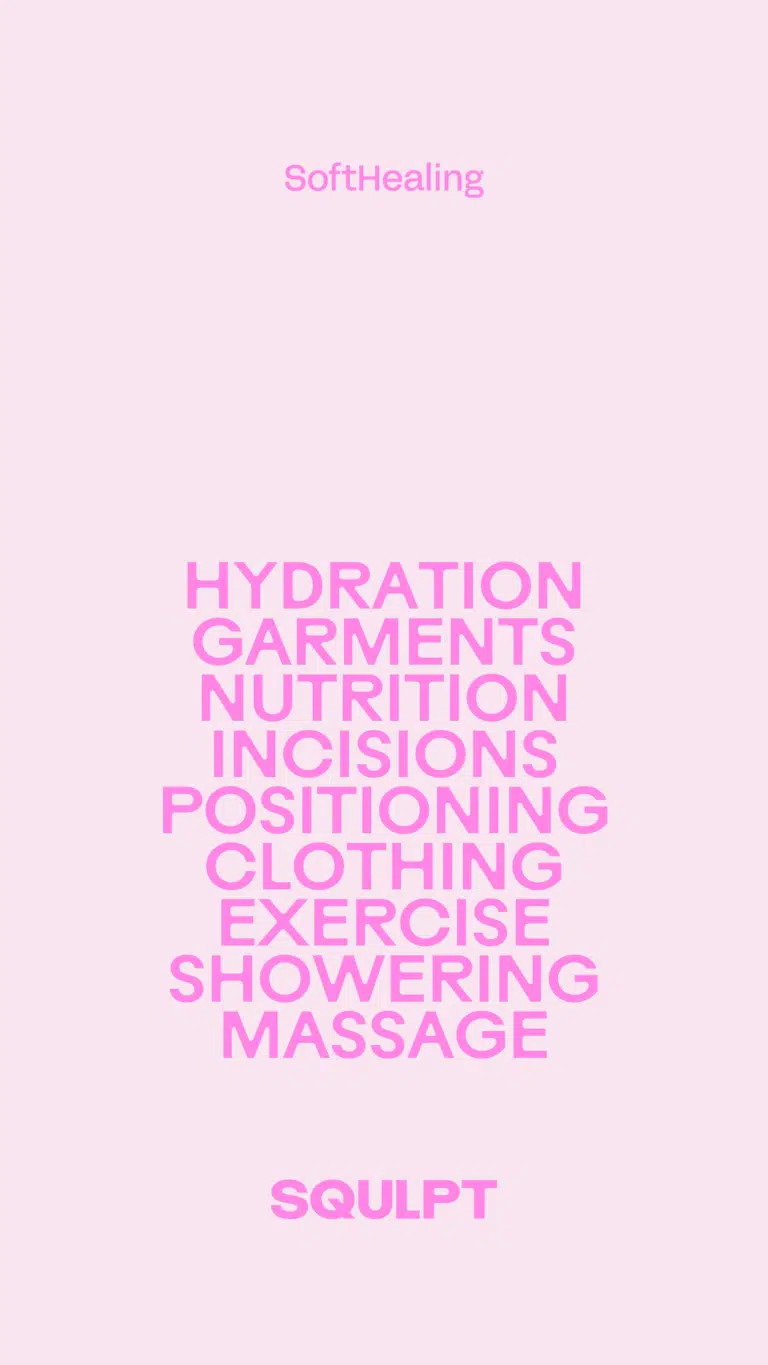
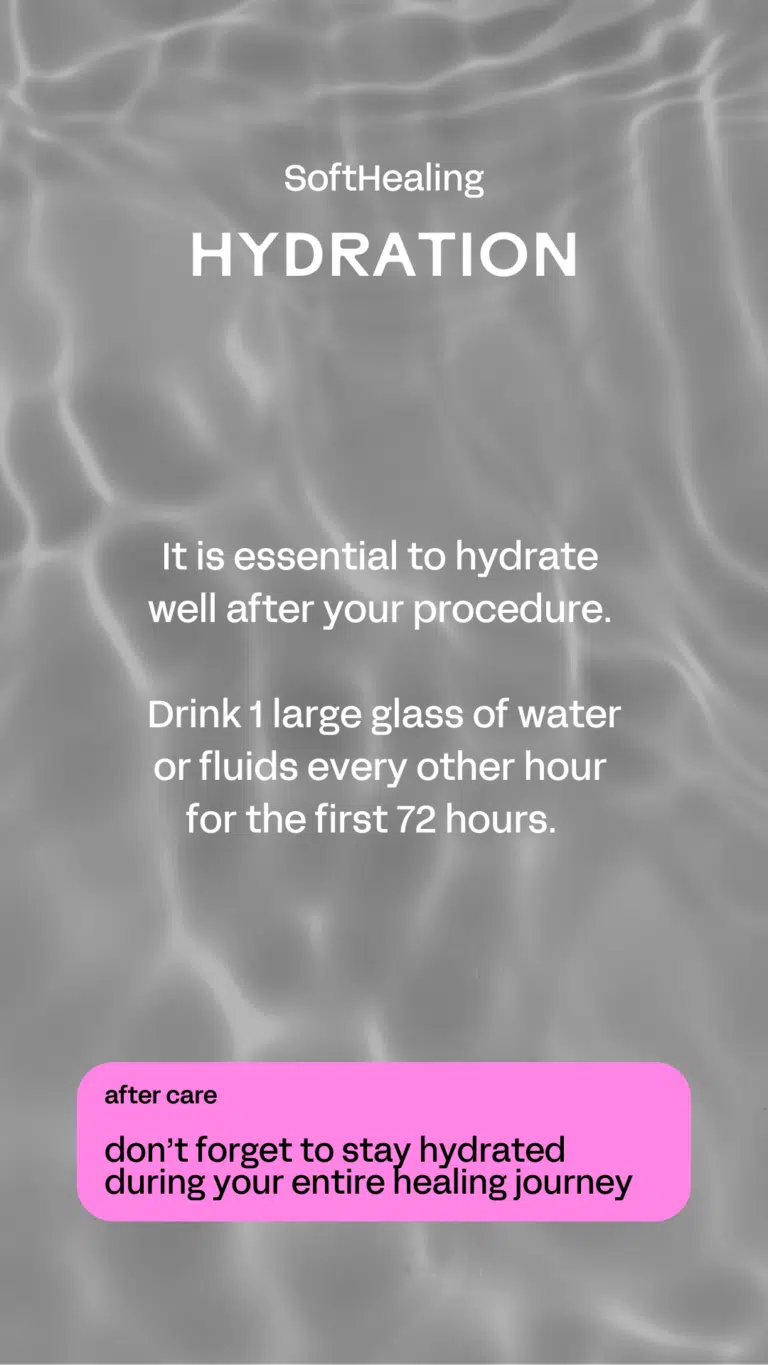
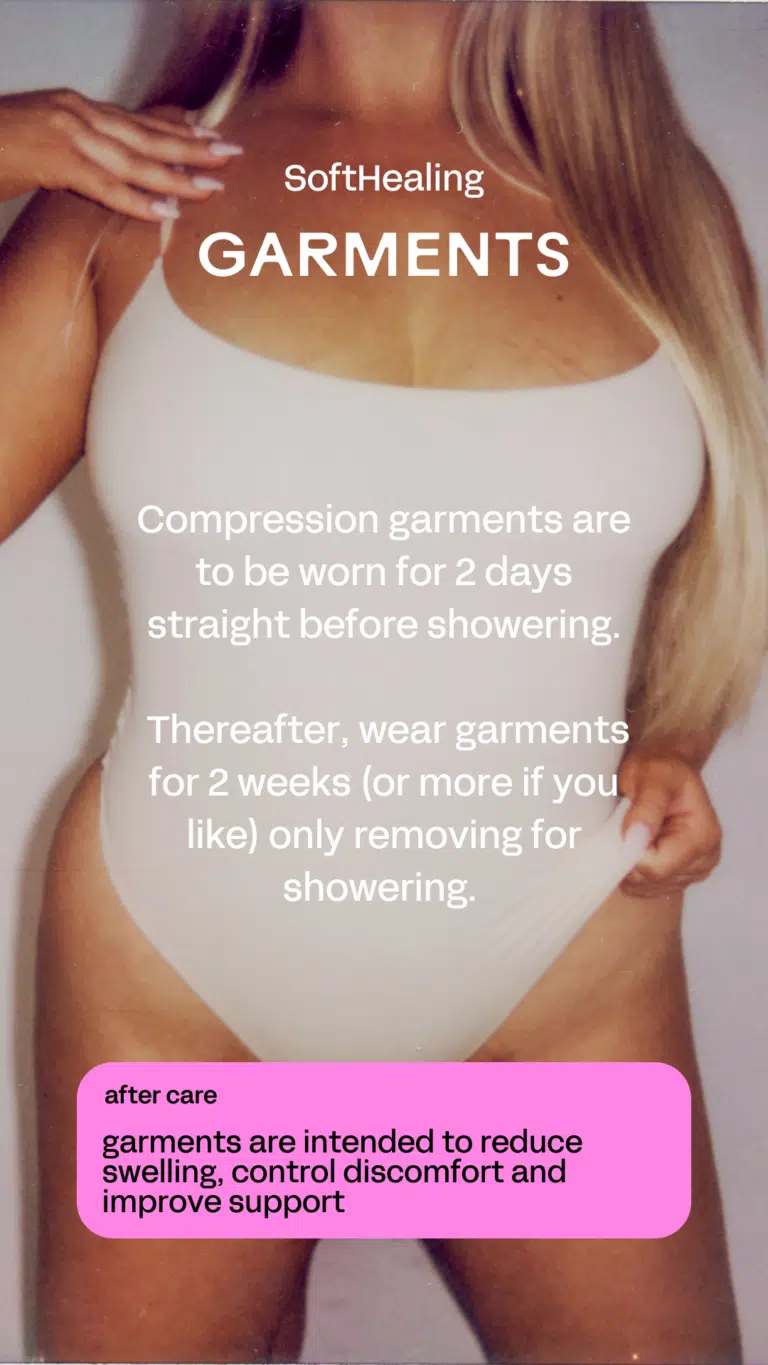
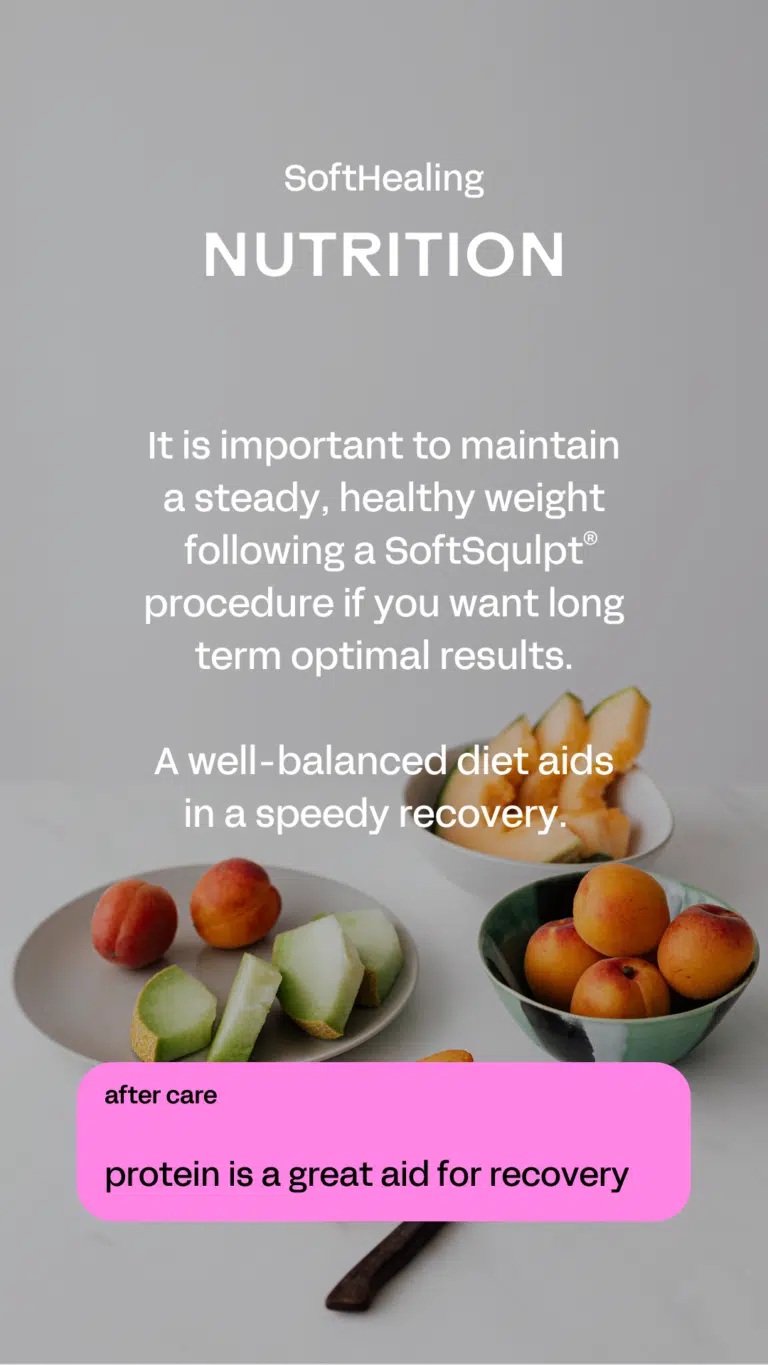
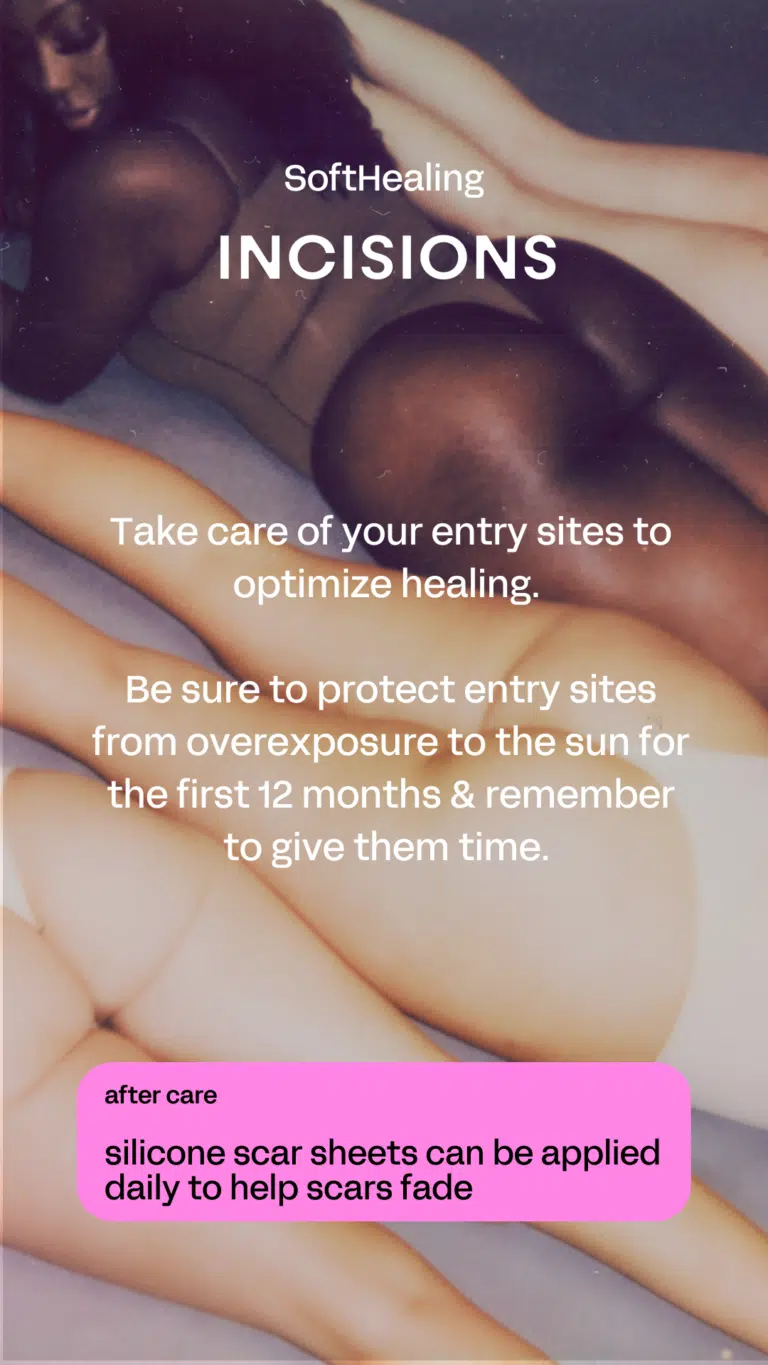
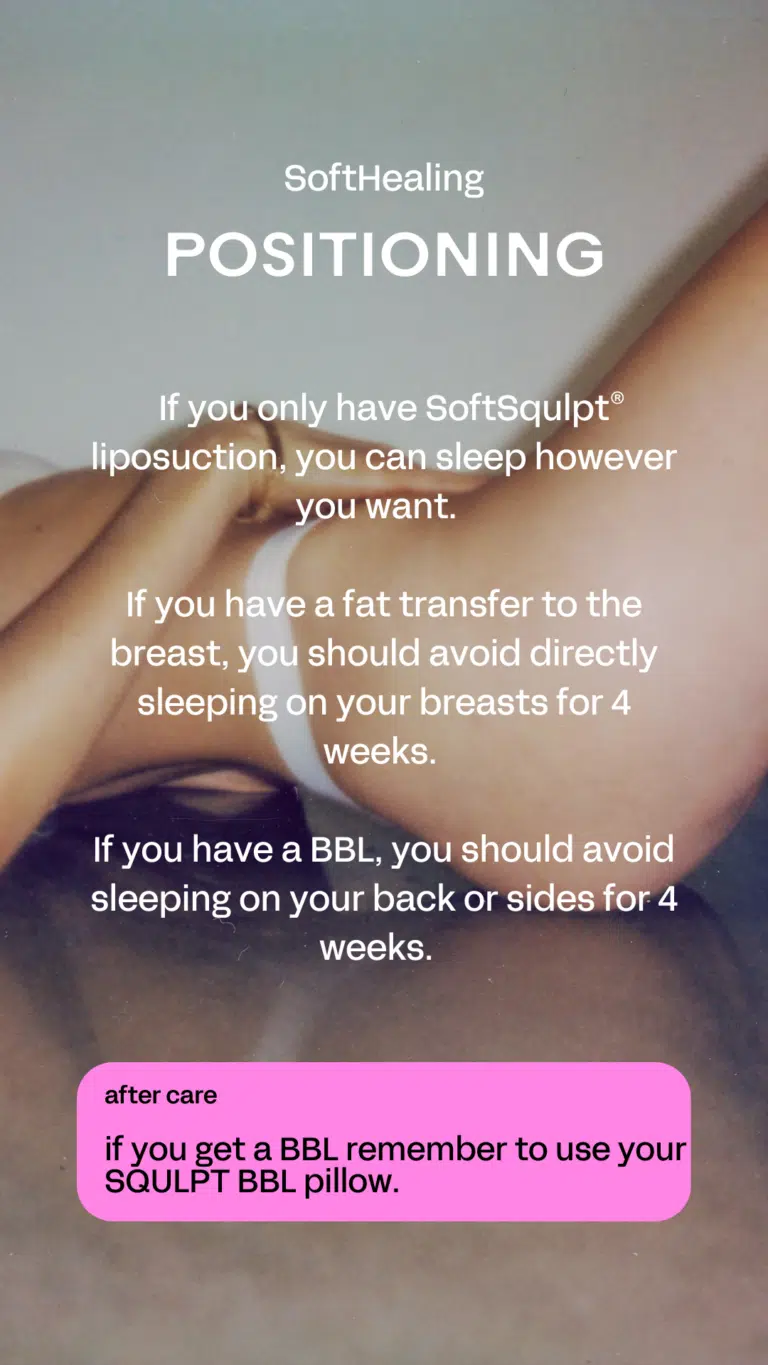
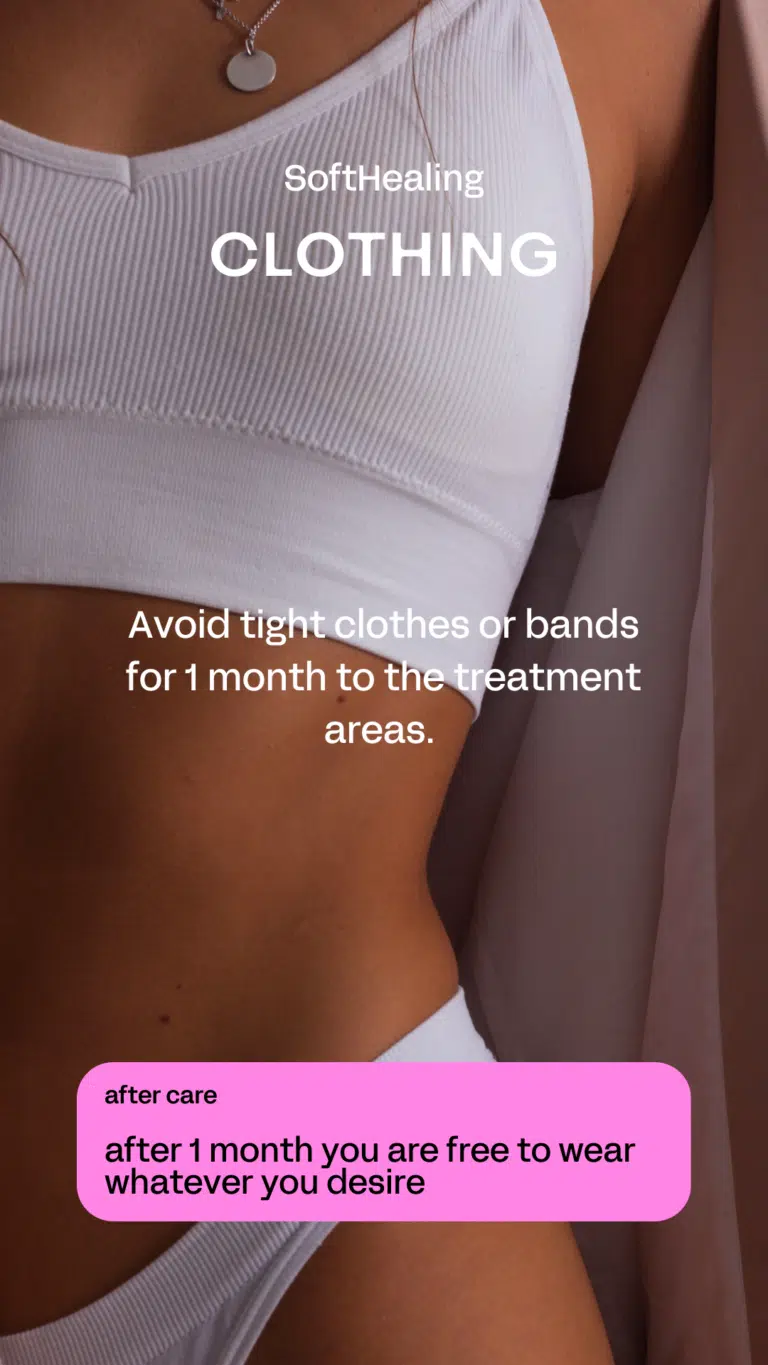
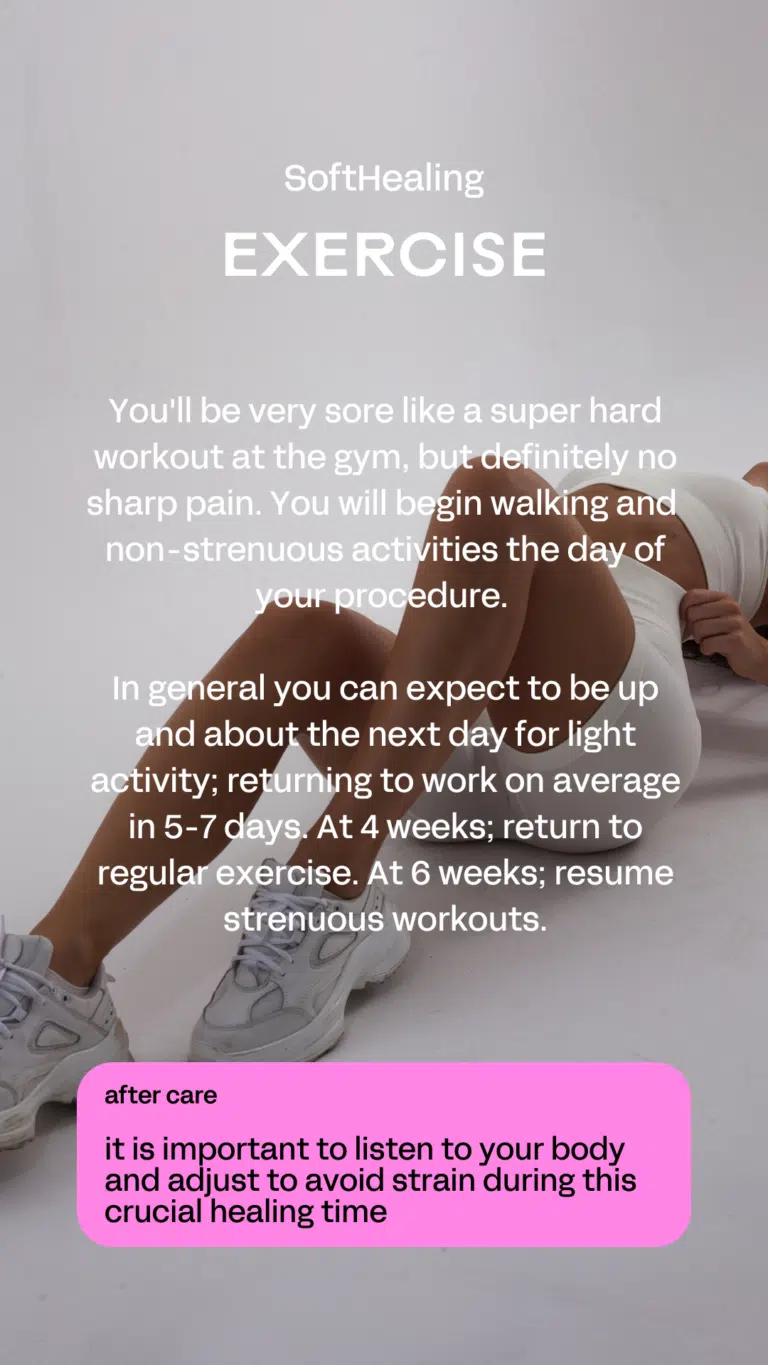

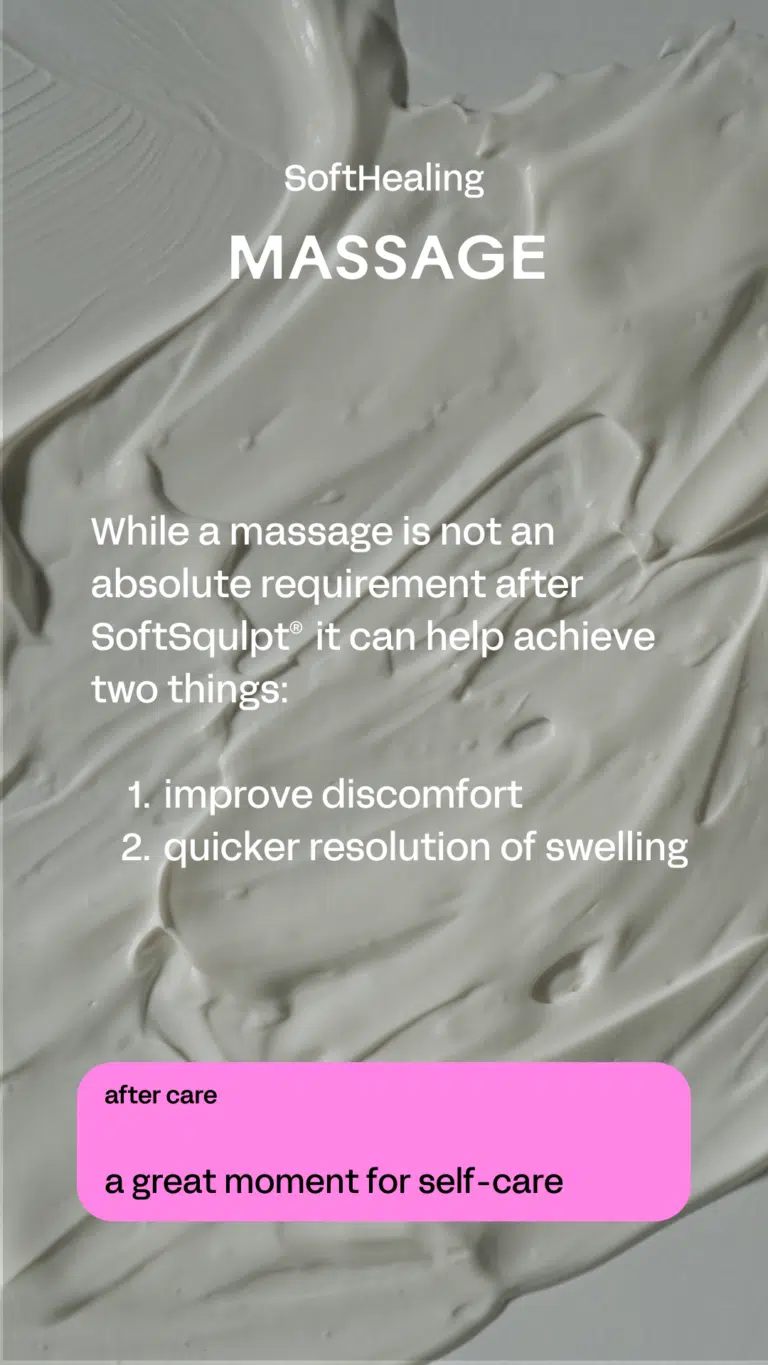
Now that you know what to expect after your procedure, here are some do’s and don’ts to help you stay comfortable and speed up your recovery.
Do’s:
- Arrange for someone to pick you up after your surgery and stay with you for the first few days to help you shower, etc.
- Get plenty of rest.
- Wear comfortable, loose-fitting clothes.
- Wear your compression garment.
- Limit salt intake as salt can exacerbate swelling.
- Eat healthy and nutritious foods.
- Drink plenty of water to stay hydrated.
- Take any medications prescribed by your surgeon as needed.
- Be sure to follow your surgeon’s aftercare instructions and attend your follow–up appointment(s) to make sure you’re healing well.
Don’ts:
- Sleep on your stomach or side.
- Smoke or consume alcohol for at least 2 weeks.
- Attempt any vigorous, high-intensity exercise for 4-6 weeks.
- Wear a tight and/or underwire bra for at least 3 weeks.
f you are in doubt about an activity, please speak to a member of our post-care team for clarification
Which symptoms are normal, and which are not, post-surgery?
Swelling, bruising, numbness and mild discomfort are normal in the first few weeks. You can also expect a moderate amount of fluid to drain from your entry sites around the treatment area in the first 36 hours. All of these sensations are normal and a sign your body is healing. However, there are some abnormal symptoms to watch out for. If you experience any of the following, be sure to reach out to your surgeon right away:
- Sudden chest pain
- Shortness of breath
- Excruciating pain
- Signs of infection (pus, oozing)
- High fever
Frequently asked questions
Our goal at Squlpt is to help you feel as prepared and knowledgeable about your procedure as possible ahead of time, so that you can feel relaxed and comfortable during your surgery and the recovery period that follows. Below are the answers to some of our most commonly-asked questions.
Q: Should I wear a bra after fat transfer to the breast?
A: No, you should avoid wearing a normal bra right after a breast fat transfer. You’ll be given a compression garment to wear for the first two weeks. From there, we recommend wearing a comfortable bra with no underwire for the next few months.
Q: How long will my breasts be sore and swollen?
A: While everyone’s recovery is different, our patients typically report that bruising, soreness and swelling reduce significantly after the first week and symptoms get better from there.
Q: How long does it take for the fat from the transfer to settle?
A: With a SoftSqulpt fat transfer procedure, you can anticipate that 30% of the fat will reabsorb on its own in the first 4-6 weeks and the rest stays permanently from there. By this point in your healing journey, the transferred fat will have settled in to reveal your new curves.
Q: Does fat transfer to the breasts last forever?
A: Yes! Because breast augmentation with fat transfer uses your own body fat as filler instead of silicone or saline implants, your new look will be yours to keep—no redos or touch-ups needed.
Q: Should I massage my breasts after a fat transfer?
A: No, you should avoid massages around the treatment area for at least the first 6 weeks as you need to give the fat time to settle in. Any pressure may hinder the adherence process.
Prioritize your recovery to achieve the best results
The key to a successful breast fat grafting recovery is to be prepared ahead of time, and focus on your healing following the surgery. Listen to your body, be kind to yourself as you heal, and be sure to follow your surgeon’s advice—along with our SoftHealing™ Aftercare guide—to make your experience as comfortable and pain-free as possible.
Ready to take the next step and embrace the curves you deserve? Book a free virtual consultation with a Squlpt surgeon and body consultant today, who will walk you through every detail of what to expect and work with you to create a custom plan to bring your body goals beautifully to life.
Check out our Before & After gallery
Watch real testimonials with our SqulptStories


